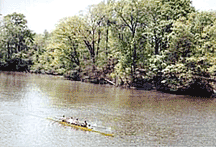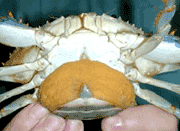|
||
Way DownstreamIn Chesapeake Bay, hope hasn’t drowned in the dead zones. On the Chesapeake Bay Foundation’s annual Among 12 categories in the Chesapeake Bay Foundation’s report card, nutrient pollution still scored lowest, with nitrogen, dissolved oxygen and water clarity receiving Fs, along with underwater grasses, oysters and shad. Earning the highest marks were forested buffers, B+, and rockfish, earning an A+. Overall, the news once again this year wasn’t good enough to raise the Bay’s failing grade of D. In Anne Arundel County, visitors help pay our taxes. The average household saves $335 in taxes because of tourism, according to a study commissioned by the Annapolis and Anne Arundel County Conference and Visitors Bureau. In 2005, Tourism brought the county $65.9 million in tax revenues, Choice Communications Systems of Upper Marlboro found. Much of the money came in from property taxes paid by hotels, motels and bed and breakfasts, plus sales taxes paid by lodgers in those establishsments. The rest is income tax paid by 28,440 workers whose jobs depend on tourism. In Annapolis, Veterans’ Day volunteers helped make St. John’s College’s waterfront along College Creek Far from Annapolis, Mayor Ellen Moyer and Robert Redford have been spending time together. But they weren’t alone. The mayor visited Redford’s Sundance, Utah, retreat for a Gathering on Climate Protection. As Redford sees it “For years now this issue has been made a political football at the national level of politics … State and local officials are way ahead of Washington on this.” Thirty-one mayors from 22 states agreed, gathering to work out what cities can do to stop climate change … And last but not least, this week’s Creature Feature comes from Virginia, where authorities are figuring a better way to deal with sponge crabs. A 10-year-old ban on taking the pregnant crabs with the bulging bellies hasn’t been working because most of them die when crabbers throw them back, according to So, reports the Virginian-Pilot, Virginia officials are thinking of scrapping the ban and replacing it with an expanded no-take zone in the middle of the Bay protecting all crabs. That would provide an undisturbed sanctuary for pregnant females to migrate and lay eggs without the deadly human touch. |
||
|
|
||
|
© COPYRIGHT 2004 by New Bay Enterprises, Inc. All rights reserved.
|



 State of the Bay report card, Bay health improved by two points over the last three years, rising to 29 out of a possible 100. The Foundation credits the small rise to reduced nitrogen and phosphorus pollution. Despite cleaner technologies and sewage treatment upgrades, people can’t take all the credit. The dry spring of 2006 reduced the usual spring nutrient load.
State of the Bay report card, Bay health improved by two points over the last three years, rising to 29 out of a possible 100. The Foundation credits the small rise to reduced nitrogen and phosphorus pollution. Despite cleaner technologies and sewage treatment upgrades, people can’t take all the credit. The dry spring of 2006 reduced the usual spring nutrient load. one of the Bay’s largest living shorelines, adding 200 shrubs and trees to more than 10,000 plants and 60,000 oysters planted to restore a half-acre of tidal wetlands on the Severn River tributary. Designed by Chesapeake Bay Foundation restoration biologist Rob Schnabel, the restoration project replaces 800 feet of bulkhead with natural shoreline and adds an oyster reef …
one of the Bay’s largest living shorelines, adding 200 shrubs and trees to more than 10,000 plants and 60,000 oysters planted to restore a half-acre of tidal wetlands on the Severn River tributary. Designed by Chesapeake Bay Foundation restoration biologist Rob Schnabel, the restoration project replaces 800 feet of bulkhead with natural shoreline and adds an oyster reef … research by the Virginia Institute of Marine Sciences. It matters in Maryland because crabs know no boundaries in the Bay.
research by the Virginia Institute of Marine Sciences. It matters in Maryland because crabs know no boundaries in the Bay.